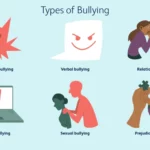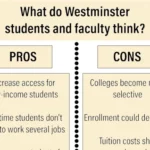Transform your classroom into a dynamic learning environment with the power of movies! Engage your students like never before, with the many benefits of teaching with movies. From visual learning to critical thinking, cultural awareness, and beyond, movies can be an incredible tool for enhancing your curriculum and sparking students’ interest. But with so many options out there, how do you choose the best films for your classroom? In this article, we’ll explore how to select educational movies that are relevant, age-appropriate, accurate, and of high production quality. Plus, we’ll provide discounts and resources for teachers, including online streaming services, educational movie websites, and even free educational movies. Get ready to take your teaching to the next level with the magic of movies!
Contents
- The Benefits of Teaching with Movies
- How to Choose Educational Movies
- Discounts and Resources for Teachers
- Conclusion
-
Frequently Asked Questions
- What are some examples of how movies can be used in the classroom?
- How can movies benefit student learning?
- How should teachers choose educational movies?
- What are some resources for teachers to access educational movies?
- How can movies enhance cultural awareness in the classroom?
- How can movies be used to develop critical thinking skills?
- What types of movies are best for classroom use?
- How can teachers ensure that movies are used effectively in the classroom?
- Are there any potential drawbacks to using movies in the classroom?
- What are some ways to integrate movies into lesson plans?
- References
The Benefits of Teaching with Movies

Using movies in the classroom can be a powerful tool for educators. Teaching with movies can promote engagement and interest in the subject matter, as well as aid in visual learning and critical thinking and analysis. Additionally, movies can help to promote cultural awareness and provide a unique perspective on historical events or social issues. When choosing educational movies, it is important to consider the relevance to the curriculum, age appropriateness, accuracy and authenticity, and production quality. There are many discounts and resources available to teachers, including online streaming services, discount programs, and educational movie websites. By incorporating movies into lesson plans, educators can provide an engaging and effective learning experience for their students.
Engagement and Interest
Teaching with movies is a great way to engage students and spark their interest in a subject. Watching a movie can be a fun and entertaining way to learn, and it allows students to connect with a subject on an emotional level. When students are engaged and interested in a topic, they are more likely to remember what they have learned. Additionally, movies can provide a way to make difficult or abstract concepts more concrete and understandable. For example, a movie about historical events can bring those events to life and help students better understand the context and impact of the events. By using movies in the classroom, teachers can create an environment that fosters curiosity, creativity, and critical thinking skills.
It is important to note that not all movies are created equal when it comes to educational value. Some movies may be purely entertainment-driven and not provide much in the way of educational content. It is essential to choose movies that have educational value and that align with the learning objectives of the lesson. By selecting movies that are relevant to the curriculum, age-appropriate, accurate and authentic, and of high production quality, teachers can ensure that their students are not only entertained but also learning important concepts.
Engagement and interest are critical to the learning process, and teaching with movies can be an effective way to achieve both. When used appropriately, movies can provide a valuable addition to traditional teaching methods and create an engaging and memorable learning experience for students.
Visual Learning
Visual learning is a powerful teaching tool that can be harnessed by using movies in the classroom. It is a well-known fact that students learn best when they are provided with engaging visuals that complement the lesson. By using films, students can visualize, understand, and remember complex concepts that might be challenging to comprehend through traditional teaching methods. Movies can help students who struggle with reading or listening comprehension, as they can follow the visual cues to make sense of the content.
One example of how to use movies for visual learning is by providing students with quizlet promo code to create flashcards to learn new vocabulary. Teachers can pause the movie at specific moments and ask students to write down the new words they heard or saw on the screen. Then, students can create flashcards with these words and review them later, helping them to retain the vocabulary. Another example is by using films to teach science concepts, such as by observing live animals with ant farms for kids or creating a hands-on experience with wooden 3D puzzles. These activities can help students better understand abstract scientific ideas and make learning fun.
Visual learning can be improved by incorporating movies into the curriculum. Whether it’s analyzing the camera angles in a film or discussing the symbolism used throughout the movie, films can provide a rich visual experience that enhances the learning process. Additionally, teachers can use these films to introduce new concepts, as well as reinforce previously learned material. By leveraging the power of visual learning, teachers can help their students to develop a deeper understanding of the subject matter and improve their academic performance.
Critical Thinking and Analysis
Movies can be an excellent tool to develop critical thinking and analysis skills in students. By analyzing the plot, characters, and themes of a movie, students can learn to think more deeply and critically about the world around them. Movies can help students learn to identify patterns, make connections, and draw conclusions. To facilitate critical thinking and analysis, teachers can use discussion questions that challenge students to think beyond the surface level of the movie. For example, teachers can ask students to consider the motivations of the characters or the underlying messages of the movie. Teachers can also use movie analysis worksheets that guide students through the process of analyzing a movie. These worksheets can include questions that relate to plot, character development, and thematic elements.
Movies can also help students develop their analysis skills. For instance, students can learn to analyze camera angles, lighting, and sound effects to gain a deeper understanding of the movie. Teachers can also show students how to use film terminology to describe the various elements of a movie. By doing so, students can learn to communicate their ideas more effectively and develop their critical thinking skills.
To enhance critical thinking and analysis skills, teachers can use several resources available online. For example, Zoom Education and ABC Mouse for Teachers offer interactive games and activities that help students develop critical thinking and analysis skills. Stepping Stones for Kids and Free Rosetta Stone offer language-learning programs that can help students learn to analyze foreign films. Additionally, Teacher Freebies offers free resources, such as movie analysis worksheets and discussion questions, that teachers can use to enhance critical thinking and analysis skills.
Movies can be an effective tool for developing critical thinking and analysis skills in students. By using discussion questions, movie analysis worksheets, and film terminology, teachers can help their students develop their critical thinking and analysis skills. Using online resources such as Zoom Education, Stepping Stones for Kids, and Teacher Freebies can enhance the effectiveness of movie-based lessons.
Cultural Awareness
Movies can be a powerful tool for promoting cultural awareness in the classroom. By exposing students to diverse perspectives and experiences, movies can help them develop empathy and understanding for people from different cultures and backgrounds. When selecting movies for this purpose, it is important to choose films that accurately represent the culture they are depicting and avoid perpetuating harmful stereotypes. Some great resources for finding movies that promote cultural awareness include Zoom Education, ABC Mouse for Teachers, and Stepping Stones for Kids. Additionally, teachers can use resources like Free Rosetta Stone to help students learn languages spoken in different cultures. When showing movies that depict cultures other than their own, it can be helpful to provide students with context and background information to help them better understand and appreciate the film. Teachers should also be prepared to facilitate open and respectful discussions about the cultural themes and issues portrayed in the movie. By using movies to promote cultural awareness, teachers can help create a more tolerant and inclusive classroom environment.
How to Choose Educational Movies

When choosing educational movies to use in the classroom, it’s important to consider several factors to ensure that the movie is both engaging and relevant to the curriculum. Relevance to the curriculum is the most important factor to consider, as the movie should align with the learning objectives and topics being covered in class. Additionally, teachers should consider the age appropriateness of the movie, as well as its accuracy and authenticity to ensure that students are not receiving false information. Finally, production quality should also be taken into account, as low-quality movies can be distracting and ineffective. By taking these factors into consideration, teachers can choose educational movies that will effectively enhance learning in the classroom. Check out some discounts and resources for teachers to access educational movies.
Relevance to Curriculum
is one of the most important factors to consider when selecting a movie for educational purposes. The movie should align with the curriculum and learning objectives. It should be relevant to the topic being taught, and should provide a clear connection between the movie and the subject matter. Additionally, the movie should be appropriate for the grade level and educational level of the students. It is also important to consider the length of the movie, as it should fit within the time constraints of the curriculum. Finally, the movie should provide a unique perspective or insight into the subject matter, and should offer something that cannot be found in other resources. When selecting a movie for educational purposes, it is important to carefully consider its relevance to the curriculum and its potential to enhance students’ learning experience.
Age Appropriateness
Choosing movies that are appropriate for the age of your students is crucial for a successful teaching experience. While some movies may be highly educational, they may not be appropriate for all age groups. For example, movies that deal with mature themes such as violence or sexuality should be reserved for high school students. To ensure that you are selecting movies that are age-appropriate, consider the following:
- Check movie ratings: Movie ratings are an excellent way to determine the age-appropriateness of a movie. G-rated movies are suitable for all ages, while PG-rated movies may contain some material that is not suitable for young children. Movies rated PG-13 and R are not recommended for younger students, as they contain mature themes and content.
- Preview movies: It is always a good idea to preview movies before showing them to your students. This will help you determine if the movie is appropriate for your students’ age and maturity level.
- Consider cultural differences: Movies that are appropriate for one culture may not be suitable for another. Be mindful of cultural differences when selecting movies for your classroom.
By selecting movies that are age-appropriate, you can ensure that your students are engaged and learning in a safe and supportive environment. If you’re looking for resources that can help you choose age-appropriate movies, check out the websites that offer movie reviews and ratings. These websites can help you determine if a movie is suitable for your students.
Accuracy and Authenticity
Accuracy and authenticity are crucial when selecting movies for educational purposes. Movies can be a powerful tool to engage students and make learning more enjoyable, but it’s important to ensure that the content is accurate and authentic. When choosing a movie to use in the classroom, it’s essential to research the accuracy of the information presented. It’s also important to consider the authenticity of the movie’s portrayal of people, cultures, and historical events.
One way to ensure accuracy and authenticity is to select movies that have been reviewed by educational organizations or have won awards for their historical or cultural accuracy. For example, the movie “Hidden Figures” has been praised for its accurate portrayal of the role of African American women in the space race. Another way to ensure accuracy is to use movies that are based on true events or are adapted from reputable sources, such as books or historical records.
It’s also important to consider the authenticity of the movie’s portrayal of people, cultures, and historical events. For example, a movie about Native Americans should be sensitive to their culture and not perpetuate stereotypes. Additionally, movies about historical events should be accurate in their portrayal of the people, events, and timelines.
To further enhance authenticity, it’s useful to provide students with additional resources such as primary sources, historical documents, or interviews with experts. These resources can help students understand the context of the movie and provide a more nuanced understanding of the subject matter.
Accuracy and authenticity are crucial when selecting movies for educational purposes. When choosing a movie, it’s important to research the accuracy of the information presented and the authenticity of the movie’s portrayal of people, cultures, and historical events. By selecting movies that are accurate and authentic, teachers can use movies as a powerful tool to engage students and make learning more enjoyable and meaningful.
Production Quality
Production quality is an important aspect to consider when choosing educational movies for the classroom. The quality of the production can greatly affect students’ engagement and interest in the material, as well as the accuracy and authenticity of the information presented.
- Visual and Audio Quality: The visual and audio quality of the movie should be clear and high enough for students to understand and follow along easily. Poor quality visuals or audio can distract from the educational content and reduce students’ comprehension.
- Acting and Directing: Good acting and directing can enhance the educational content of a movie and make it more enjoyable for students to watch. Poor acting or directing can detract from the educational content and make it less engaging.
- Accuracy and Authenticity: The movie should accurately and authentically represent the time period, culture, or subject matter it is portraying. Movies that take liberties with historical or scientific facts can misinform students and should be avoided.
- Costumes and Sets: The costumes and sets used in the movie should be accurate and authentic to the time period or culture being portrayed. This can help students better visualize and understand the material being presented.
When selecting movies for the classroom, it is important to consider all of these aspects of production quality to ensure that the movie is both engaging and educational for students.
If you are looking for resources to enhance the production quality of your classroom, consider using a fluorescent light filter to reduce glare and eye strain for students, or check out Adventure Academy for high-quality educational videos and games.
Discounts and Resources for Teachers
Teachers can take advantage of various discounts and resources when incorporating movies into their lessons. Many online streaming services offer educational discounts for teachers, allowing them to access a wide range of movies at a discounted price. Additionally, there are discount programs specifically designed for teachers that offer reduced rates on movie rentals and purchases. Educational movie websites are also available, providing teachers with free access to a collection of movies that are relevant to their curriculum. These resources allow teachers to incorporate movies into their lessons without breaking the bank, making it easier for them to enhance their students’ learning experience through the use of engaging and informative films.
Online Streaming Services
With the rise of online streaming services, there are now more options than ever for teachers to access movies for their classes. Netflix, Amazon Prime Video, and Hulu all have extensive libraries of movies that can be streamed directly to a classroom computer or projector. Many educational movie websites such as TeachWithMovies.org offer streaming options for their recommended films. Some of these sites even offer lesson plans and learning guides to accompany the movies. Another option is to download movies to show in class if streaming is not possible during the school day. Keep in mind that some schools may have restrictions on streaming services, so it’s important to check with your school’s IT department before relying on them. Online streaming services provide teachers with a convenient and easy way to access a wide variety of educational movies for their classes.
Discount Programs for Teachers
Teachers can take advantage of many discount programs that offer discounts on movie rentals, purchases, and streaming services. Here are some of the top discount programs for teachers:
| Program | Discount |
|---|---|
| AMC Theatres | Discounted tickets on Thursdays |
| Cinemark | Discounted tickets for bulk purchases |
| Regal Cinemas | Discounted tickets on selected days |
| Redbox | Free movie rentals on selected days |
| Netflix | Free 30-day trial for new members |
| Hulu | Discounted monthly subscription |
| Amazon Prime | Discounted monthly subscription |
In addition to these discount programs, many movie studios and distributors offer discounts or free educational resources to teachers. For example, TeachWithMovies.org offers free lesson plans and learning guides based on over 425 films. The site also offers a subscription service that provides access to additional resources and discounts on educational films. By taking advantage of these discount programs and resources, teachers can save money while providing their students with engaging and educational films.
Educational Movie Websites
Educational movie websites can be a great resource for teachers looking to incorporate movies into their lesson plans. Many of these sites offer a wide variety of films that have been carefully selected for their educational value. Some sites even provide accompanying lesson plans and learning guides to help teachers integrate the movie into their curriculum. Other educational movie websites offer films that are geared specifically toward certain subjects, such as history, science, or literature. By using these sites, teachers can easily find a movie that aligns with their curriculum and enhances their students’ learning experience. Some popular educational movie websites include TeachWithMovies.org, PBS Learning Media, and BrainPOP. These sites offer a range of films that cover various subjects and grade levels, making it easy for teachers to find the perfect movie for their classroom. Additionally, some of these sites offer free educational movies, which can be a great option for teachers on a budget. Overall, educational movie websites are a valuable tool for teachers looking to enhance their lesson plans and engage their students in a fun and interactive way.
Free Educational Movies
For teachers on a budget, finding free educational movies is a great way to supplement classroom learning. Many educational movie websites offer free movies for teachers to use in their lesson plans. These movies can cover a wide range of topics, from history to science to literature. Some websites offer a limited selection of free movies, while others have a larger collection. It’s important to do some research and find websites that offer movies that are relevant to your curriculum. Some popular websites that offer free educational movies include Kanopy, SnagFilms, and Top Documentary Films. It’s important to note that while these movies are free, they may require registration or a subscription to access. Additionally, free movies may not always meet the same production quality standards as paid movies. However, with some careful research and planning, free educational movies can be a great resource for teachers looking to supplement their lesson plans without breaking the bank.
Conclusion
Teaching with movies is a powerful tool that can engage and inspire students, while also promoting critical thinking, cultural awareness, and visual learning. By choosing relevant, age-appropriate, accurate, and high-quality films, teachers can supplement their curriculum and provide students with a unique and memorable educational experience. Additionally, with the many discounts and resources available to teachers, including online streaming services, discount programs, and educational movie websites, it has never been easier or more affordable to incorporate movies into the classroom. Overall, with careful planning and consideration, teaching with movies can be a valuable addition to any educator’s toolkit, helping to enrich classes and drive assignments, and ultimately, to promote social-emotional learning and academic success.
Frequently Asked Questions
What are some examples of how movies can be used in the classroom?
Teachers can use movies to engage students, promote visual learning, develop critical thinking skills, and increase cultural awareness. For example, students can analyze scenes from films to improve their understanding of literary works or explore dystopian characteristics through movie clips.
How can movies benefit student learning?
Movies can benefit student learning by increasing engagement and interest, promoting visual learning, developing critical thinking skills, and increasing cultural awareness. They can also help students understand complex concepts and relate to different perspectives.
How should teachers choose educational movies?
Teachers should choose educational movies based on their relevance to the curriculum, age appropriateness, accuracy and authenticity, and production quality. It’s important to select films that align with learning objectives and provide accurate information.
What are some resources for teachers to access educational movies?
Teachers can access educational movies through online streaming services, discount programs, educational movie websites, and free educational movies. Some examples include TeachWithMovies.org and Kanopy.
How can movies enhance cultural awareness in the classroom?
Movies can enhance cultural awareness in the classroom by exposing students to different perspectives and ways of life. They can help students understand and appreciate diverse cultures, customs, and traditions.
How can movies be used to develop critical thinking skills?
Movies can be used to develop critical thinking skills by encouraging students to analyze and evaluate different elements of the film, such as plot, character development, and cinematography. They can also help students develop their own opinions and perspectives.
What types of movies are best for classroom use?
Movies that are relevant to the curriculum, age-appropriate, accurate and authentic, and of high production quality are best for classroom use. It’s important to select films that align with learning objectives and provide accurate information.
How can teachers ensure that movies are used effectively in the classroom?
Teachers can ensure that movies are used effectively in the classroom by setting clear learning objectives, providing guidance and structure for movie analysis and discussion, and assessing student understanding and comprehension.
Are there any potential drawbacks to using movies in the classroom?
Potential drawbacks to using movies in the classroom include inaccurate information, inappropriate content, and over-reliance on visual learning. It’s important to carefully select films and provide context and guidance for student analysis and discussion.
What are some ways to integrate movies into lesson plans?
Teachers can integrate movies into lesson plans by using them to introduce or reinforce concepts, analyze literary works, explore historical events, or promote cultural awareness. They can also be used as a way to engage students and provide a break from traditional classroom activities.






